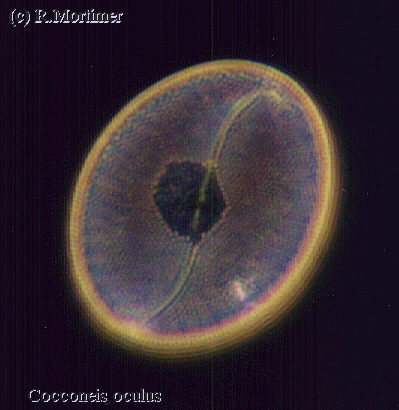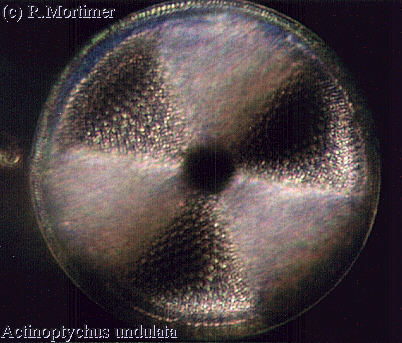|
Part IV by Roland Mortimer,
|
 |
Part I, Part II and Part III of this series were presented in earlier Micscape issues.
The diatom frustules shown are specimens taken from samples obtained near Ibicui beach, Grand Island and also from Guaratiba Canal on Rio's coast. All of the images were made using standard 100 ASA Kodak colour film with an exposure of ½ second, in dark-field using a Leitz Heine condenser, a x40 Leitz achromat N.A. 0.65 with iris and x5 KF photographic eyepiece.
Some of the frustules are difficult to photograph in their entirety because of their thickness etc. Planachromatic objectives might have helped get better images. I was pleased to discover A. Schmidt (see footnotes) had actually found his specimen of Auliscus grunovii (Grünow) here in Rio too more than a century ago, as I found the same diatom here a few weeks back and include two images below.
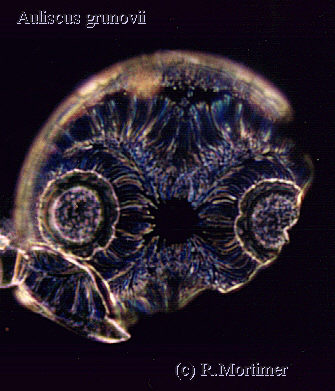 |
 |
 The
first specimen excited me so much that I made a slide of it only to discover
it was so fine it had broken a little (above left). Fortunately, I found
another and managed to mount it as a single specimen on a permanent slide
(above right). The valve structure of some of the diatoms can only really
be seen in any detail using phase contrast; when I get used to taking photos
in phase, I will write an article including some images of the more finely
structured diatoms.
The
first specimen excited me so much that I made a slide of it only to discover
it was so fine it had broken a little (above left). Fortunately, I found
another and managed to mount it as a single specimen on a permanent slide
(above right). The valve structure of some of the diatoms can only really
be seen in any detail using phase contrast; when I get used to taking photos
in phase, I will write an article including some images of the more finely
structured diatoms.
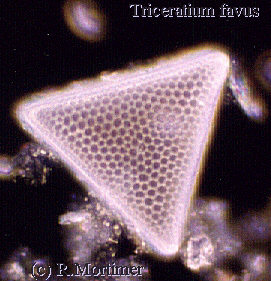 It
never ceases to amaze me how Schmidt and Peragallo etc. (see
footnotes) managed to draw and photograph these diatoms in such
detail and so accurately with relatively simple apparatus compared to our
'high-tech.' equipment, probably because they had more free time to observe
and draw accurately.
It
never ceases to amaze me how Schmidt and Peragallo etc. (see
footnotes) managed to draw and photograph these diatoms in such
detail and so accurately with relatively simple apparatus compared to our
'high-tech.' equipment, probably because they had more free time to observe
and draw accurately.
I would like to thank Mr. D.S. Gill for kindly sending me the book by Peragallo et Peragallo on CD and Sr. Adilson Passos for supplying some of the equipment I required to obtain my images. Again, I am sorry for any errors encountered in identifying the diatoms included in this article.
Comments to the author Roland
Mortimer welcomed.
Footnotes:
Adolf Schmidt, an esteemed German
diatomist during the latter part of the nineteenth century, compiled an
atlas of diatoms together with colleagues. Namely, Friedrich Fricke, Martin
Schmidt, Heinrich Heiden, Otto Mueller and Friedrich Hustedt and took almost
a century to complete (1874-1959). The book title is "Atlas der Diatomaceenkunde"
or atlas of diatom types. The atlas covers diatoms around the globe and
is still used by diatomists today.
The Peragallo
brothers, Hippolyte and Maurice also wrote an extremely good book (1897-1908)
called: "Les Diatomees Marines de France" which has many excellent drawings
of diatoms they found around Europe. Both books are very expensive, especially
Schmidt's atlas, but fortunately the book plates can be bought on CD for
a very moderate sum compared to the high cost of the reprinted works.
Editor's note: the CD's can be bought from Savona Books. Schmidt's atlas on CD contains the first 268 plates. The 'Peragallo CD' contains the 137 plates and plate text. (Information sourced from the Savona Books catalogue).
Image gallery by the author.
 |
 |
 |
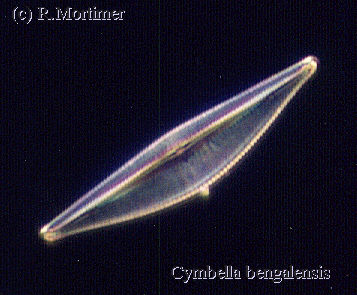 |
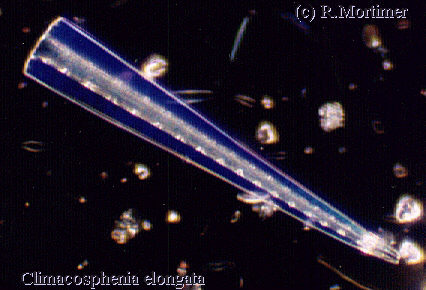 |
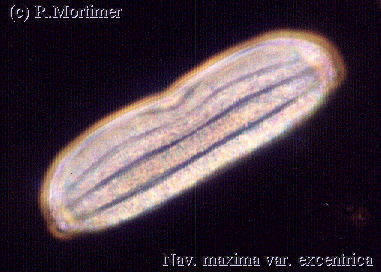 |
